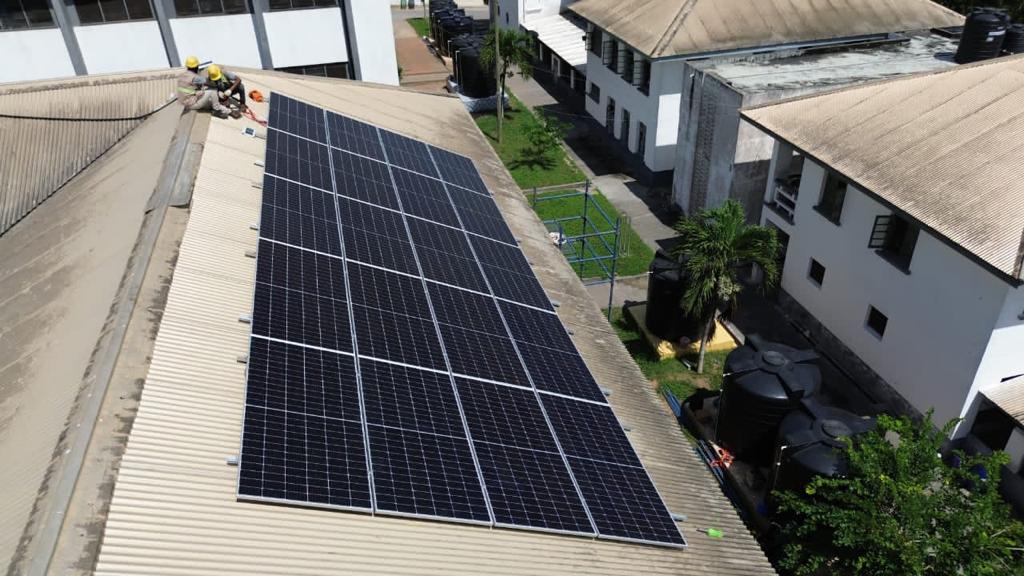
In the domain of solar innovations, progress is both subtle and ground-breaking. From solar panels adorned with nano-wires to windows that magically transform light into electricity, the spectrum of innovations is as diverse as promising. The thin, flexible solar panels, solar farms on water, and solar paint are now real inventions. These innovations bring us closer to a future where almost anything can produce clean energy.
India’s Role in the Solar Symphony
India stands not as a mere spectator but as a prominent player in the global solar revolution. India currently stands 4th globally in solar power capacity. In the last five years, the country’s solar installed capacity has experienced a monumental transformation, increasing from 21,651 MW to 70,096 MW in 2023. With ambitious targets and policies like the Production Linked Incentive (PLI), India is propelling itself to achieve 500 GW of renewable energy capacity by 2030. The commitment is not just towards sustainable energy but towards securing a greener tomorrow for the entire planet.
As we move forward in 2024, the solar industry’s declining costs, enhanced energy storage solutions, and grid advancements take centre stage. The industry witnesses increased decentralisation, widespread adoption, and a surge in solar projects, reflecting a commitment to a sustainable energy future. Several global trend reports in 2023 show that solar energy is becoming not just an option but a global necessity.
The Government of India’s commitment to solar power is not just in words but in comprehensive policies and initiatives. The Production Linked Incentive Scheme (PLI) for the National Programme on High-Efficiency Solar PV Modules for achieving manufacturing capacity of Giga Watt (GW) scale in High-Efficiency Solar PV modules with an outlay of USD 3 billion has been introduced to boost domestic manufacturing and solidify India’s position as a solar powerhouse.
An integrated capacity of 8737 MW has been added under the PLI (Tranche-I), while 39,600 MW of domestic Solar PV module manufacturing capacity has been allocated to 11 companies under Tranche-II, bringing in an investment of USD 12 billion and generating over 1 Lakh direct and indirect jobs.
Another critical initiative underlining India’s commitment to solar energy is the Solar Park Scheme, designed to establish 50 Solar Parks of 500 MW and above with a cumulative capacity of 38 GW by 2025-26. These solar parks act as hubs for solar energy generation, attracting investments and fostering a conducive environment for solar power development. They are instrumental in achieving economies of scale, making solar energy more affordable and accessible. Under this scheme, so far, 11 Solar Parks with an aggregate capacity of 8521 MW have been completed, and 7 Solar Parks with an aggregate capacity of 3985 MW have been partially completed. In these parks, solar projects of an aggregate capacity of 10,237 MW have been developed.
New solar power capacity addition are transforming India’s agricultural sector by setting up decentralised solar power plants, replacing agriculture diesel pumps with solar agriculture water pumps and solarising existing grid-connected agriculture pumps.
Rooftop Solar Programme for the residential sector and the Off-grid Solar PV Applications Programme for rural areas are also making solar energy accessible by providing subsidies. The support is not just financial; it’s a strategic investment in a solar-powered future.
Moreover, the International Solar Alliance (ISA), launched in 2015 by the Prime Minister of India and the President of France, is a prime example of how collaborative efforts can steer the world toward a cleaner, greener, and more sustainable future. It is a member-centric, collaborative platform focused on action aimed at creating 450 GW of renewable energy by 2030. It aims to enhance the widespread adoption of solar energy technologies by expanding energy access, ensuring energy security, and catalysing the energy transition within its member countries.
With 20 winners, SolarX: A Startup Challenge Africa Chapter, an initiative by ISA, is also bringing forth innovative and affordable solar energy solutions to Africa’s power challenges. ISA is striving to unlock USD 1 Trillion in investments by 2030 by reducing the cost of technology and its financing and increasing the skills of the solar industry workforce.
India’s Vision 2030: Innovations Illuminated
India’s vision for 2030 is a mosaic of renewable energy dominance with a significant focus on green growth to fight climate change and enable energy transition. Guided by the Panchamrit Policy (a 5-point policy outline), as announced at COP26, India has set following resolute targets to usher in a renewable revolution:
• 500 GW of renewable energy capacity by 2030
• Meeting 50 per cent of its energy requirement from renewable sources by 2030
• Reducing the total projected carbon emissions by 1 billion tonnes by 2030
• Reducing the carbon intensity of its economy by under 45 per cent
• Becoming a net zero carbon country by 2070
By 2047, India aims to become an energy-independent nation through a mix of electric mobility, CNG & piped natural gas, 20 per cent ethanol blending & green hydrogen production. The country also aims to achieve 90 per cent of its energy from renewable sources.
According to a KPMG report, India would require investments worth USD 350-400 billion annually by 2030 to meet its clean energy targets – a potential opportunity for global investors. India’s energy transition can potentially create nearly 5-6 million jobs by 2030, touching 9-10 million by 2047.
In this energy independence journey towards 2047, emerging technologies hold the key. India has the potential to play an important role in clean technology manufacturing, driven by a supportive policy ecosystem, manufacturing clusters and a unique skill set. India aspires to adopt advanced technologies that promise secure, affordable, and sustainable energy for all.
Tapping into the Potential of Solar Advancements
Beyond the economic and technological advancements, the environmental benefits of solar power advancements include:
• Mitigating climate change: Solar panels significantly contribute to reducing climate change through their low ecological impact and minimised carbon footprint.
• Reduced pollution: Transitioning to cleaner energy sources reduces air and water pollution, promoting a healthier and sustainable environment.
• Securing the planet’s future: Solar power’s environmental benefits go beyond progress, which is crucial in ensuring a sustainable future.
As India strides towards its ambitious solar targets, the opportunities for investors are not just abundant; they are a gateway to being a part of India’s solar success story. The avenues range from investing in solar projects to supporting manufacturing initiatives. With a robust policy framework and the government’s unwavering support, investors can confidently navigate the solar landscape. India’s solar journey is not just a journey of growth; it’s an invitation for investors to be partners in a brighter, cleaner future.
The post India’s Solar Power Revolution: Leading the Way in Renewable Energy appeared first on Ghanaian Times.
Read Full Story




















Facebook
Twitter
Pinterest
Instagram
Google+
YouTube
LinkedIn
RSS